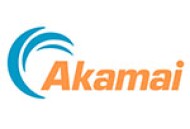In the case of PBot, malicious actors used decades-old PHP code to generate the largest DDoS attack observed by Akamai in the second quarter. Attackers were able to create a mini-DDoS botnet capable of launching a 75 gigabits per second (Gbps) DDoS attack. Interestingly, the Pbot botnet was comprised of a relatively small 400 nodes, yet still able to generate a significant level of attack traffic.
Another entry on the “everything old is new again” list is represented by the Akamai Enterprise Threat Research Team’s analysis of the use of Domain Generation Algorithms (DGA) in malware Command and Control (C2) infrastructure. Although first introduced with the Conficker worm in 2008, DGA has remained a frequently used communication technique for today's malware. The team found that infected networks generated approximately 15 times the DNS lookup rate of a clean network. This can be explained as the outcome of access to randomly generated domains by the malware on the infected networks. Since most of the generated domains were not registered, trying to access all of them created a lot of noise. Analyzing the difference between behavioral characteristics of infected versus clean networks is one important way of identifying malware activity.
When the Mirai botnet was discovered last September, Akamai was one of its first targets. The company’s platform continued to receive and successfully defended against attacks from the Mirai botnet thereafter. Akamai researchers have used the company’s unique visibility into Mirai to study different aspects of the botnet, most specifically in the second quarter, its C2 infrastructure. Akamai research offers a strong indication that Mirai, like many other botnets, is now contributing to the commoditization of DDoS. While many of the botnet’s C2 nodes were observed conducting “dedicated attacks” against select IPs, even more were noted as participating in what would be considered “pay-for-play” attacks. In these situations, Mirai C2 nodes were observed attacking IPs for a short duration, going inactive and then re-emerging to attack different targets.
“Attackers are constantly probing for weaknesses in the defenses of enterprises, and the more common, the more effective a vulnerability is, the more energy and resources hackers will devote to it,” said Martin McKeay, Akamai senior security advocate. “Events like the Mirai botnet, the exploitation used by WannaCry and Petya, the continued rise of SQLi attacks and the re-emergence of PBot all illustrate how attackers will not only migrate to new tools but also return to old tools that have previously proven highly effective.”
By the Numbers:
Other key findings from the report include:
- The number of DDoS attacks in Q2 increased by 28 percent quarter over quarter following three quarters of decline.
DDoS attackers are more persistent than ever, attacking targets an average of 32 times over the quarter. One gaming company was attacked 558 times or approximately six times a day on average. - Egypt was the origin of the greatest number of unique IP addresses used in frequent DDoS attacks with 32 percent of the global total. Last quarter, the United States held that spot and
- Egypt was not among the top five.
- Fewer devices were used to launch DDoS attacks this quarter. The number of IP addresses involved in volumetric DDoS attacks dropped 98 percent from 595,000 to 11,000.
- The incidence of Web application attacks increased five percent quarter-over-quarter and 28 percent year-over-year.
- SQLi attacks were used in more than half (51 percent) of web application attacks this quarter—up from 44 percent last quarter—generating nearly 185 million alerts in the second quarter alone.








